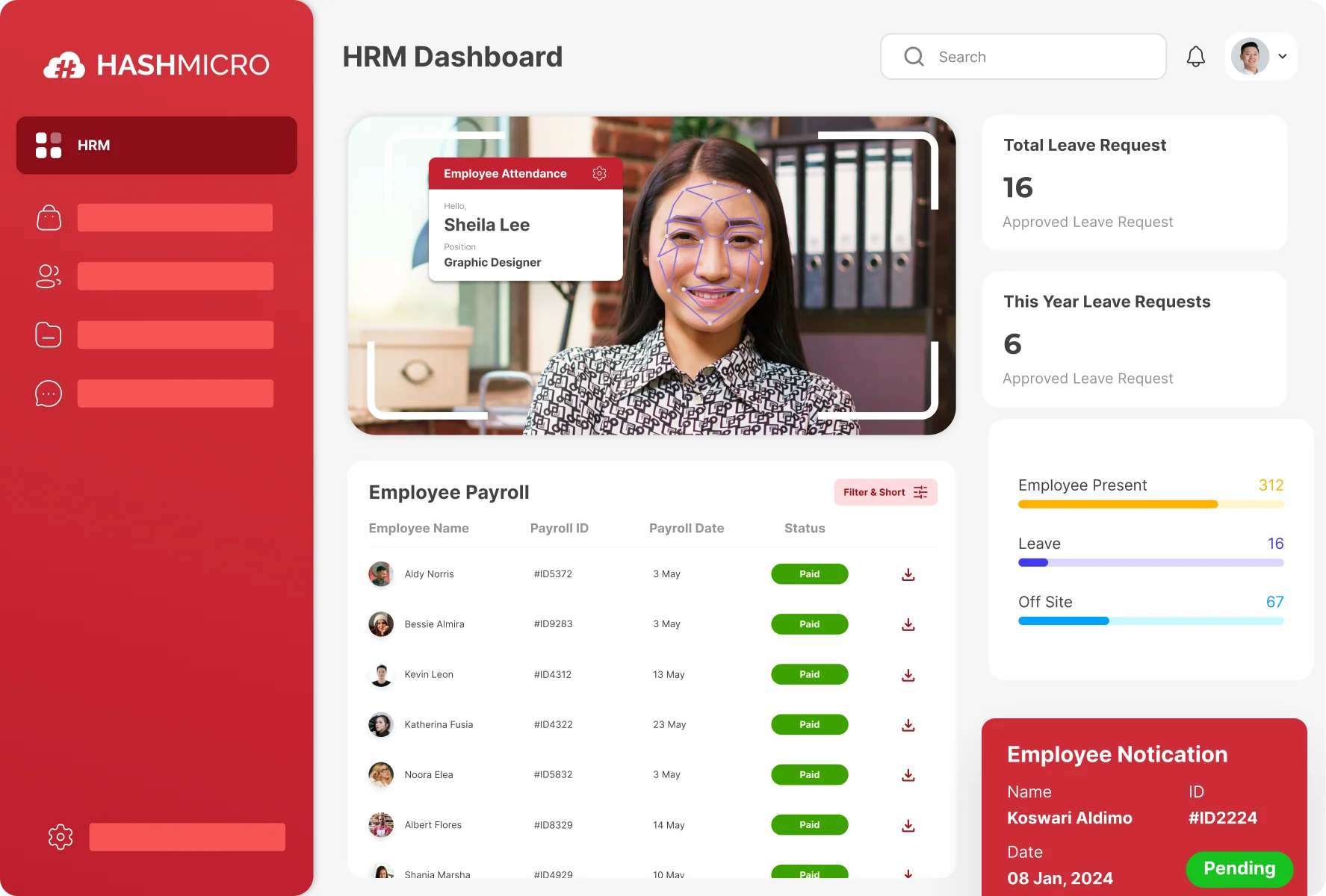Managing payroll might seem simple at first, but it quickly becomes a challenge for many businesses. From calculating pay periods to complying with labor laws, mistakes can happen, and the consequences aren’t small.
Imagine dealing with late paydays, miscalculated overtime, or incorrect deductions. It must be frustrating for employees and stressful for employers. These issues can hurt your team’s morale, disrupt workflows, and even damage your company’s reputation.
No business wants to lose time and money fixing payroll mistakes that could’ve been avoided. This article discusses everything you need to know about pay periods in the Philippines, from their types and legal requirements to tips for selecting the best schedule for your business.
Key Takeaways
|
Table of Contents
What is a Pay Period?
A pay period refers to the regular schedule when employees earn their wages and receive their paychecks. It determines when the employer processes and distributes employee payroll in the form of a payslip.
It’s essential to note that the pay period differs from the workweek. In the Philippines, the Labor Code requires employers to establish a fixed workweek, usually consisting of seven consecutive 24-hour periods (168 hours).
The workweek can begin on any day and time, depending on company policy, and employers may define different workweeks for various employee groups.
The workweek primarily ensures accurate computation of overtime and compliance with labor laws, particularly regarding proper compensation for hours worked beyond the standard 40-hour workweek.
Pay Period vs. Payroll Cycle
A pay period is the specific timeframe during which an employee earns compensation, while a payroll cycle refers to how frequently the company processes payroll.
The pay period defines the exact date range for calculating an employee’s wages or salary. For example, if a company pays employees monthly, the pay period for January would run from January 1 to January 31.
On the other hand, the payroll cycle indicates the interval between each payroll processing. For instance, with a monthly pay period, the payroll cycle occurs once a month, meaning the company completes 12 payroll cycles in a year.
Pay Period vs. Pay Date
A pay period refers to the time frame during which employers calculate employee earnings, while the pay date is the exact day employees receive their paychecks.
In simpler terms, the pay period is the period employees work to earn the wages reflected in their next paycheck, while the pay date is when that paycheck is issued.
The payday may align with the end of the pay period and is typically the date displayed on the employee’s paycheck.
Types of Pay Period
 Within the guidelines of the Philippine Labor Code, a business can choose a pay period, such as daily, weekly, bi-weekly, or monthly, and may implement multiple pay periods for different employee groups (e.g., salaried or hourly), which translates to various kinds of payslip.
Within the guidelines of the Philippine Labor Code, a business can choose a pay period, such as daily, weekly, bi-weekly, or monthly, and may implement multiple pay periods for different employee groups (e.g., salaried or hourly), which translates to various kinds of payslip.
Once established, these pay periods must remain consistent, with wages paid at least once every two weeks or twice a month at intervals not exceeding 16 days.
1. Daily
Historically, daily payroll in the Philippines has been uncommon due to the administrative challenges of processing tax withholdings and payroll on such a frequent basis. However, modern payroll applications, such as “earned wage access” platforms, now make daily pay easier to manage.
These apps allow employees to access their earned wages before the usual payday, often with a small per-transaction fee. Employees can only withdraw wages they’ve already earned.
Pros:
Daily pay can improve employee satisfaction by providing quicker access to earnings for emergencies and daily expenses. It is especially attractive to temporary or seasonal workers who require flexibility in their earnings.
Cons:
Administering daily payroll can be complex and expensive, especially for smaller companies. Challenges include ensuring compliance with the BIR tax withholding rules, managing deductions such as loans or garnishments, and issuing accurate pay stubs. A
Pay cycles per year:
There could be as many as 365 pay periods in a year, depending on the company’s setup and employee contracts.
2. Weekly
Weekly payroll is not as common in the Philippines but is often used in industries like construction, retail, or hospitality, where employees are paid for short-term or daily work.
Employers who adopt a weekly pay period usually align it with a fixed workweek, ensuring consistent payments on the same day every week, such as every Friday.
Pros:
Weekly payroll aligns well with the Labor Code’s overtime and holiday pay rules, making compliance easier. Weekly pay is attractive in industries with high turnover or where tips form a significant portion of wages.
Cons:
Weekly payroll requires frequent processing, which can increase costs, especially for businesses using third-party payroll vendors that charge for each cycle.
Companies must ensure accurate tax withholdings, manage leave and benefits, and account for holidays and overtime, which adds to the administrative burden.
Pay cycles per year:
With weekly payroll, there are 52 pay cycles in a year.
3. Bi-weekly
Bi-weekly pay is relatively less common in the Philippines but is occasionally adopted by businesses seeking to balance frequent payments with reduced administrative workload. In this structure, employees are paid every other week on a fixed day, such as Friday.
Pros:
Bi-weekly payroll provides consistent paydays, which is convenient for employees. This method simplifies overtime calculation by aligning it with a fixed workweek. Employees benefit from receiving two or sometimes three paydays in certain months, providing flexibility for budgeting.
Cons:
The main challenge is cash flow management for businesses, as months with three pay periods require additional planning to meet payroll obligations. The bookkeeping process can also become more complex due to the irregular number of pay periods in a year.
Pay cycles per year:
There are 26 pay cycles in a year for bi-weekly payroll.
4. Semi-monthly
Semi-monthly pay periods involve paying employees twice a month on fixed dates, such as the 15th and the last day of the month. If a payday falls on a weekend or holiday, payment is often made on the preceding working day.
This is one of the most common payroll practices in the Philippines, especially for salaried employees in industries like finance, information technology, and mining.
Pros:
Semi-monthly payrolls provide consistency by following fixed payment dates each month. It also simplifies the administration of taxes, benefits, and deductions, which reduces the frequency of payroll runs compared to bi-weekly systems.
Cons:
For employees paid by the hour or those entitled to overtime, semi-monthly pay periods can complicate calculations. Overlapping workweeks may make it harder to calculate and comply with overtime pay requirements as outlined in the Philippine Labor Code.
Frequency of pay cycles:
Employees on a semi-monthly schedule receive 24 paychecks in a calendar year.
5. Monthly
Monthly payroll is commonly used in the Philippines, particularly for managerial or salaried employees. Paydays typically fall on the 15th or the last working day of the month, depending on company policy.
This practice aligns with BIR tax requirements and is prevalent in smaller companies and specific industries.
Pros:
Monthly payroll is simple to administer, requiring fewer payroll runs, which helps with budgeting and resource allocation. It works particularly well for businesses with salaried employees and allows companies to manage cash flow more effectively due to the less frequent payout schedule.
Cons:
For employees paid hourly or entitled to overtime, monthly payroll can be challenging to administer accurately. Delayed access to earnings may also cause financial difficulties for employees who rely on more frequent paychecks.
Employers must carefully ensure compliance with labor laws regarding accurate overtime and holiday pay.
Frequency of pay cycles:
Employees on a monthly schedule receive 12 paychecks per calendar year.
Are you looking for a system that’s able to adjust to every pay period, including the calculations? Enter HashMicro, a system that automates salary computations, supports multiple pay periods, and ensures secure direct deposits. Check out the free demo by clicking on the banner below!

How to Determine Pay Period
When selecting a pay period schedule, there are several factors to take into account to ensure it suits both your business needs and employee preferences. Here are key considerations:
1. Understand Gross Pay
Gross pay refers to an employee’s total earnings before deductions such as taxes, contributions, and benefits. Deductions include SSS (Social Security System), PhilHealth, Pag-IBIG Fund, and withholding taxes based on the Bureau of Internal Revenue (BIR) guidelines.
2. Account for Pay Period Regulations
Under the Philippine Labor Code, employees must be paid at least twice a month, at intervals not exceeding 16 days. Employers may choose semi-monthly, bi-weekly, or monthly schedules for salaried employees. However, hourly or daily-wage workers often receive weekly or daily payouts. Ensure your chosen pay period complies with these requirements.
3. Consider Leap Years
Leap years add an extra day to the calendar every four years, which can affect payroll for weekly and bi-weekly schedules. Employers need to account for an additional pay period in these scenarios. For salaried employees, adjustments to monthly payouts may be necessary to avoid overpayment.
4. Choose a Payroll Service
Modern payroll services and software in the Philippines simplify payroll management by automating tax computations and government contributions.
Look for platforms that integrate seamlessly with BIR, SSS, PhilHealth, and Pag-IBIG systems to ensure compliance. Many payroll services also support electronic filing and payment of taxes, saving time and reducing errors.
5. Review Employment Laws
Philippine labor laws dictate various payroll-related requirements. For example, wages must be paid in full unless there are lawful deductions.
Employers are also required to provide 13th-month pay, and holiday or overtime pay must align with Department of Labor and Employment (DOLE) guidelines. Always consult DOLE for updates or industry-specific regulations that may affect your payroll schedule.
6. Consider Salary Types
The salary structure directly impacts the choice of pay period. For example:
- Hourly workers may prefer weekly payouts.
- Commission-based employees might require payouts aligned with sales cycles.
- Salaried employees typically align with semi-monthly or monthly pay periods.
Choosing the right pay frequency based on salary type can improve employee satisfaction and financial stability.
7. Account for Overtime
Overtime is common in the Philippines, and it must be calculated according to labor laws. Employees working beyond eight hours are entitled to 25% additional pay for regular work days and 30% on rest days or holidays.
Ensure your payroll system accurately tracks and calculates overtime to comply with DOLE regulations.
8. Address Employee Needs
More frequent pay periods, such as weekly or semi-monthly schedules, can enhance employee satisfaction by providing quicker access to earnings. However, these also increase payroll processing costs.
9. Factor in Industry Standards
Different industries in the Philippines often follow specific pay period practices. For example, industries like construction and retail may favor weekly pay for daily or hourly workers, while corporate offices typically adopt semi-monthly or monthly pay schedules.
10. Incorporate Benefits and Deductions
In the Philippines, employers must deduct and remit contributions for SSS, PhilHealth, and Pag-IBIG, as well as compute withholding taxes based on BIR guidelines.
Additional benefits, like health insurance or retirement plans, may also need to be factored into payroll. Choose a pay period that simplifies the calculation and remittance of these deductions.
Examples of Pay Period
Here are some common examples of pay periods, each affecting how employees receive their wages.
Understanding these can help businesses manage payroll efficiently and ensure employees are paid on time.
1. Exempt, Salaried Employee
Let’s assume an exempt, salaried employee earns ₱480,000 per year (₱40,000 per month). Here’s how her paychecks would look over the course of the year based on different pay period structures, excluding taxes and mandatory deductions (e.g., SSS, PhilHealth, Pag-IBIG):
| Pay Period | Paycheck Amount | Number of Pay Periods | Pay Date |
| Weekly | ₱9,231 | 52 | Every week |
| Bi-weekly | ₱18,462 | 26 | Every other week |
| Semi-monthly | ₱20,000 | 24 | Twice monthly |
| Monthly | ₱40,000 | 12 | Once a month |
2. Non-Exempt, Hourly Employee
Now, consider a non-exempt employee earning ₱250/hour. Overtime pay in the Philippines is calculated at 25% more for work exceeding 8 hours on a regular workday (₱312.50/hour).
Let’s calculate her earnings for two weeks, assuming the workweek starts on a Sunday:
- Week 1 (January 1–7):
- Regular hours: 40 hours × ₱250/hour = ₱10,000
- Overtime: 2 hours × ₱312.50/hour = ₱625
- Total for Week 1: ₱10,625
- Week 2 (January 8–14):
- Regular hours: 38 hours × ₱250/hour = ₱9,500
- Total for Week 2: ₱9,500
If the employee is paid on a bi-weekly basis, you simply add the weekly totals:
₱10,625 + ₱9,500 = ₱20,125
Notes:
- These examples exclude taxes (BIR withholding tax) and mandatory deductions (SSS, PhilHealth, Pag-IBIG).
- Overtime rates may vary for holidays or rest days based on the Philippine Labor Code.
- Pay schedules must comply with the Labor Code, ensuring wages are paid at least twice a month.
If you feel that these components are overwhelming, try to use digital payroll software Philippines to help automate the calculations. Other than automatic calculations, you can track changes and keep records of past payslips with this system.
Things to Consider when Choosing Pay Periods
 When choosing the right pay period for your business in the Philippines, it’s essential to consider local labor laws, costs, and employee needs. Here’s what you need to know:
When choosing the right pay period for your business in the Philippines, it’s essential to consider local labor laws, costs, and employee needs. Here’s what you need to know:
1. Employment Laws and Regulations
In the Philippines, the Labor Code requires employers to pay wages at least twice a month, with paydays not exceeding 16 days apart. However, managerial employees and those under special agreements can be paid monthly.
Employers must also adhere to other legal requirements, such as paying overtime, holiday pay, and the 13th-month pay. Review guidelines from the Department of Labor and Employment (DOLE) to ensure compliance.
2. Aligning Workweeks with Pay Periods
Aligning workweeks with pay periods simplifies payroll management. A workweek in the Philippines is typically defined as six days, with a standard of 8 hours per day, or 48 hours per week. Overtime pay must be calculated for hours worked beyond this.
For example, if an employee works 50 hours in one workweek, the additional 2 hours must be paid as overtime. Semi-monthly pay periods can lead to overlapping workweeks, so ensure accurate tracking of hours to avoid errors.
3. Payroll Costs
Payroll costs in the Philippines include wages, government-mandated contributions, and benefits. Employers must deduct contributions for:
- SSS (Social Security System)
- PhilHealth (health insurance)
- Pag-IBIG Fund (housing fund)
These deductions are calculated as a percentage of gross pay and must be remitted to the respective agencies on a monthly basis. Additionally, withholding tax must be computed according to BIR (Bureau of Internal Revenue) guidelines.
Using a payroll system can help streamline these processes, particularly for businesses with many employees.

4. Overtime Considerations
Overtime pay is required for work beyond 8 hours per day. The Labor Code mandates a 25% premium for regular overtime hours and 30% for work on rest days or holidays. Businesses with many hourly or daily-wage workers may benefit from weekly or bi-weekly pay periods.
Semi-monthly schedules can complicate overtime tracking due to overlapping periods, so ensure your payroll system can handle these complexities.
5. Employee Needs
Employees in the Philippines often prefer semi-monthly or bi-weekly pay schedules for financial stability. Many rely on frequent wages to cover bills, emergencies, or daily expenses.
Providing a pay schedule that aligns with employee needs can improve satisfaction and productivity, but businesses must balance this with the administrative costs of frequent payroll processing.
6. Tax Withholdings and Contributions
The BIR requires employers to withhold income tax from employee salaries based on graduated tax tables. Additionally, contributions for SSS, PhilHealth, and Pag-IBIG must be deducted and remitted monthly.
Using payroll software can simplify these calculations and ensure compliance with changing regulations. For instance, the BIR’s Alphalist system and electronic filing methods are essential for accurate reporting.
7. Reporting Requirements
Employers in the Philippines must maintain records for wages, hours worked, and deductions to comply with labor and tax laws. Employers are required to issue pay slips showing gross pay, deductions, and net pay for each pay period.
Additionally, they must file an Annual Information Return of Income Taxes Withheld (BIR Form 1604-CF) and monthly/quarterly remittance forms for SSS, PhilHealth, and Pag-IBIG contributions.
Common Mistakes of Pay Period Companies Should Avoid
Accurate payroll processing is crucial to avoid legal and financial issues. Here are some common mistakes businesses in the Philippines should watch out for:
1. Failure to Calculate and Pay Overtime Correctly
One frequent error is failing to calculate and pay overtime in compliance with the Philippine Labor Code. Unpaid overtime can lead to disputes, penalties, and back wages, as enforced by the Department of Labor and Employment (DOLE).
2. Delays in Remitting Contributions and Taxes
Late or inaccurate remittance of SSS, PhilHealth, Pag-IBIG contributions, and BIR withholding taxes is another common issue. Employers must adhere to strict remittance schedules, with deadlines varying depending on the size of the business or employee count.
Delays or underpayments can result in penalties, surcharges, and interest charges, further increasing the company’s liabilities.
3. Failure to Maintain Accurate Payroll Records
Employers are required to keep payroll records for at least three years under DOLE regulations. These records must include details like hours worked, gross pay, deductions, and net pay to ensure compliance with labor and tax laws.
Misclassifying employees (e.g., treating non-exempt workers as exempt or independent contractors) can also lead to legal issues and fines. Accurate records help prevent these misclassifications and ensure compliance.
Manage Pay Periods and Payrolls Effectively with HashMicro Payroll System
 Managing payroll can be challenging, pero HashMicro’s payroll system makes it simple and stress-free. It automates salary computations, supports multiple pay periods, and ensures secure direct deposits.
Managing payroll can be challenging, pero HashMicro’s payroll system makes it simple and stress-free. It automates salary computations, supports multiple pay periods, and ensures secure direct deposits.
With regular updates, the system complies with labor laws, kaya hindi mo na kailangang mag-alala about potential errors. It’s part of HashMicro’s all-in-one HRM system, which seamlessly integrates payroll with other HR tasks like recruitment, training, and employee management.
This system can also integrate with an ERP system to centralizes business data. Furthermore, features like KPI tracking for error rates and processing times ensure accurate payroll management, every time.
Beyond those functions, here are Hashmicro’s other features to make sure that every company can go through pay periods effortlessly:
- Automated Tax Calculations: HashMicro ensures accurate computation of withholding taxes based on the BIR’s graduated tax tables, including income tax, expanded withholding tax, and other statutory contributions.
- E-filing and Tax Reporting: The system generates BIR-compliant reports, such as the Alphalist, BIR Form 1601-C, and Form 1604-CF, for seamless filing. Integration with the BIR eFPS simplifies submission.
- Compliance with Payroll Requirements: HashMicro automates the generation of pay slips with detailed breakdowns, including gross pay, deductions, and net pay, in compliance with DOLE regulations.
- Statutory Contributions: The system calculates and records contributions for SSS, PhilHealth, and Pag-IBIG.
- Customizable Pay Periods: It supports various pay structures (weekly, semi-monthly, monthly).
- Audit-Ready Reports: Generate detailed audit trails and payroll summaries tailored to meet BIR’s tax documentation requirements
Conclusion
A pay period determines when employees earn wages and receive paychecks, aligning with labor and tax regulations. In the Philippines, businesses can choose various pay schedules, such as weekly, bi-weekly, semi-monthly, or monthly.
Nahihirapan sa payroll? HashMicro’s Payroll Software makes managing pay periods and salaries simple and stress-free. It automates salary calculations, processes secure direct deposits, and distributes payroll accurately based on the parameters set by both the company and the government.
With HashMicro, it’s easier to track tax deductions, overtime, and employee contributions to fill out SSS and GSIS at PhilHealth. Don’t just handle payroll; transform it into a hassle-free process with HashMicro’s Payroll Software!
Try the free demo now!

FAQ on Pay Period
-
What is the difference between a pay period and a pay date?
A pay period is the timeframe during which employees work and earn wages, while the pay date is the specific day on which employees receive their paycheck for that period. The pay date typically occurs a few days after the end of the pay period to allow for payroll processing.
-
Can an employer have different pay periods for different types of employees?
Yes, employers can implement different pay periods for various groups of employees. For example, salaried employees might be paid on a semi-monthly basis, while hourly employees could be paid weekly or bi-weekly, depending on the company’s policies and the nature of the work.
-
What factors should a company consider when choosing a pay period?
When selecting a pay period, companies should consider factors such as cash flow management, administrative costs, employee preferences, and compliance with labor laws.



































